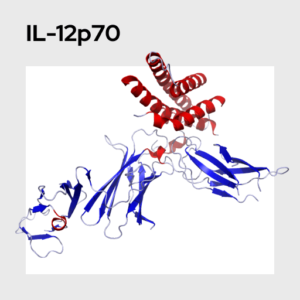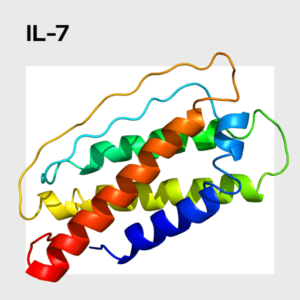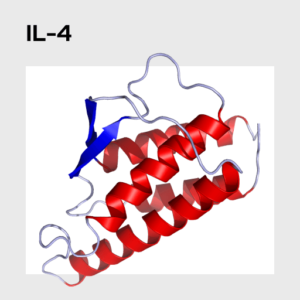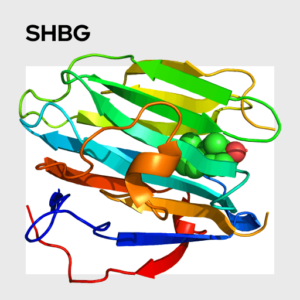Interleukin 17A (IL-17A)
Interleukin 17A (IL-17A) is also known as cytotoxic T-lymphocyte-associated antigen 8. IL-17A is a proinflammatory cytokine that is primarily produced by activated T cells, including TH17 cells. This cytokine regulates the activities of NF-kappaB (a protein complex that regulates cytokine production) and MAPK (a protein kinase that regulates cellular immune responses). IL-17A has been implicated in a number of chronic inflammatory conditions, such as rheumatoid arthritis and asthma. Because levels of 17A are typically low in the blood of healthy people, measuring this cytokine in serum or plasma may require an ultra-sensitive assay. This analyte is eligible for multiplexing.
Name: Interleukin 17A (IL-17A)
Category: Health & Inflammation
Type of test: Blood + Saliva
Interleukin-7A (IL-17A) is also known as cytotoxic T-lymphocytes-associated antigen 8. IL-17A acts primarily as a proinflammatory cytokine that is produced by activated T cells, including T helper 17 (Th17) cells. Excessive or dysregulated activation of Th17 cells have been linked to a number of autoimmune disorders, such as multiple sclerosis and psoriasis. Signaling by IL-17A, specifically, appears to play an important mediating role in the relationship between Th17 cells and autoimmunity. Under certain condition, neutrophils and other non-T cells have also been shown to release IL-17A.
IL-17A is involved in the host immune response, particularly against extracellular bacterial and certain fungal pathogens. There is some evidence that in the context of infection by intracellular pathogens like viruses, however, IL-17A is harmful in that it contributes to aberrant inflammatory responses. IL-17A signaling also appears to contribute to a number of chronic diseases, such as cancer, inflammatory ocular disorders, and asthma. Moreover, anti-IL-17A treatments have been evaluated for the treatment of psoriasis.
IL-17A also appears to contribute to neurocognitive disorders via disruption of the blood-brain barrier. Therefore, this cytokine may be a useful biomarker for researchers interested in studying the psychological and behavioral effects of neuroinflammation. IL-17A can be measured in both saliva and blood. The extent to which serum / plasma and salivary levels of this cytokine correlate is yet to be confirmed.
Huppert, J., Closhen, D., Croxford, A., White, R., Kulig, P., Pietrowski, E., ... & Kuhlmann, C. R. (2010). Cellular mechanisms of IL‐17‐induced blood‐brain barrier disruption. The FASEB Journal, 24, 1023-1034. https://pubmed.ncbi.nlm.nih.gov/19940258/
Iwakura, Y., & Ishigame, H. (2006). The IL-23/IL-17 axis in inflammation. The Journal of clinical investigation, 116, 1218-1222. https://www.ncbi.nlm.nih.gov/pmc/articles/PMC1451213/
Puig, L. (2017). Brodalumab: the first anti-IL-17 receptor agent for psoriasis. Drugs of Today, 53, 283-297. https://pubmed.ncbi.nlm.nih.gov/28650001/
Zhu, S., & Qian, Y. (2012). IL-17/IL-17 receptor system in autoimmune disease: mechanisms and therapeutic potential. Clinical science, 122, 487-511. https://pubmed.ncbi.nlm.nih.gov/22324470/






